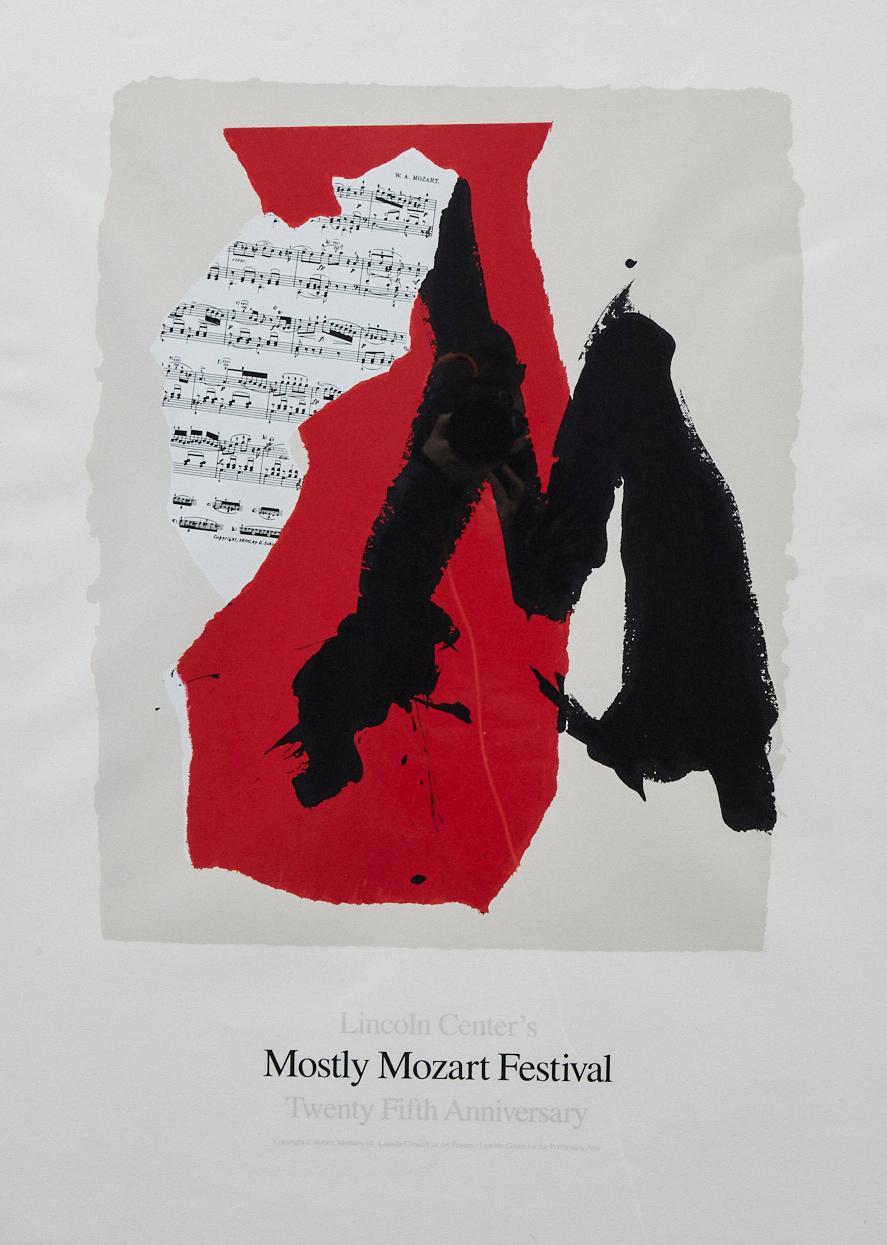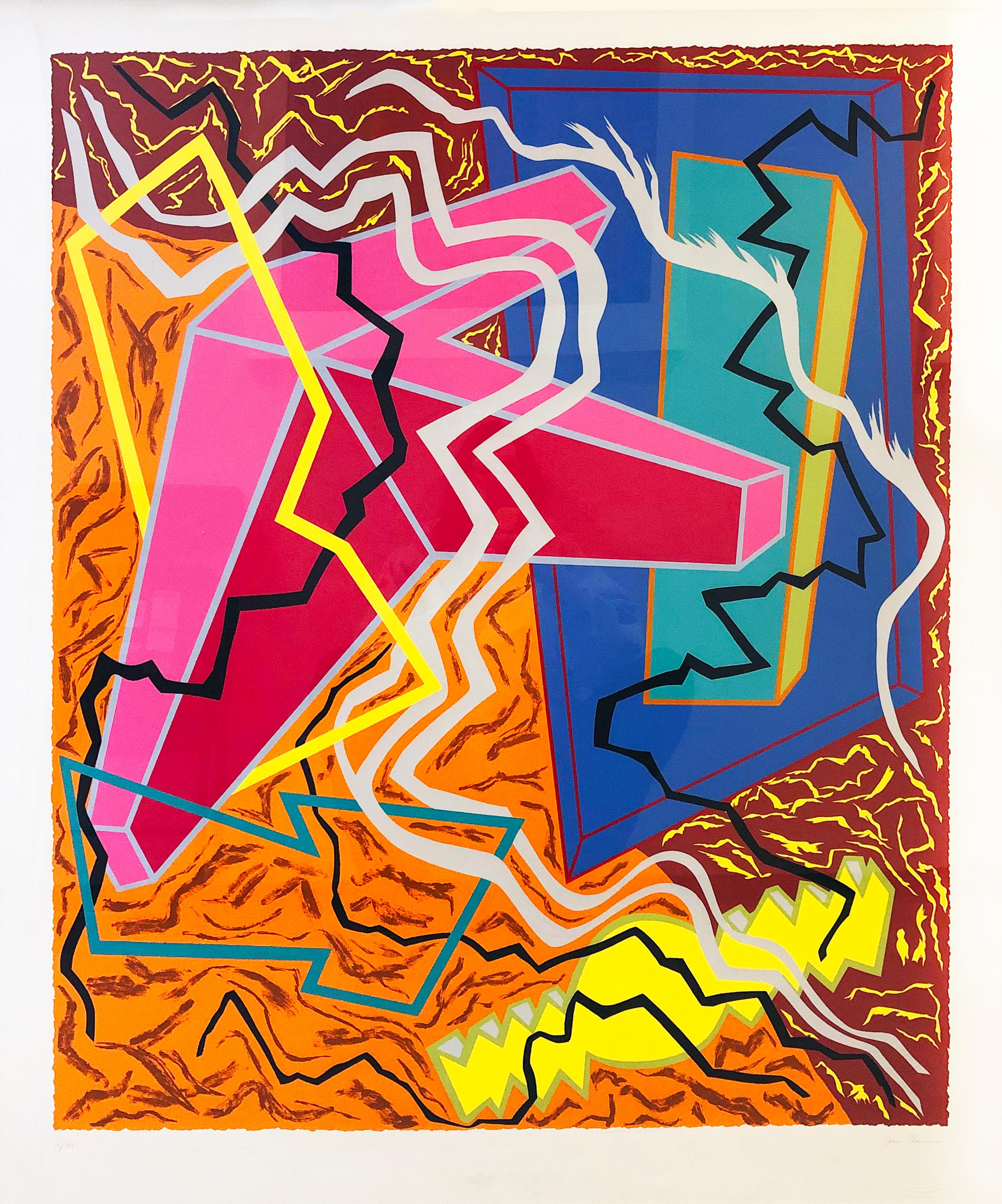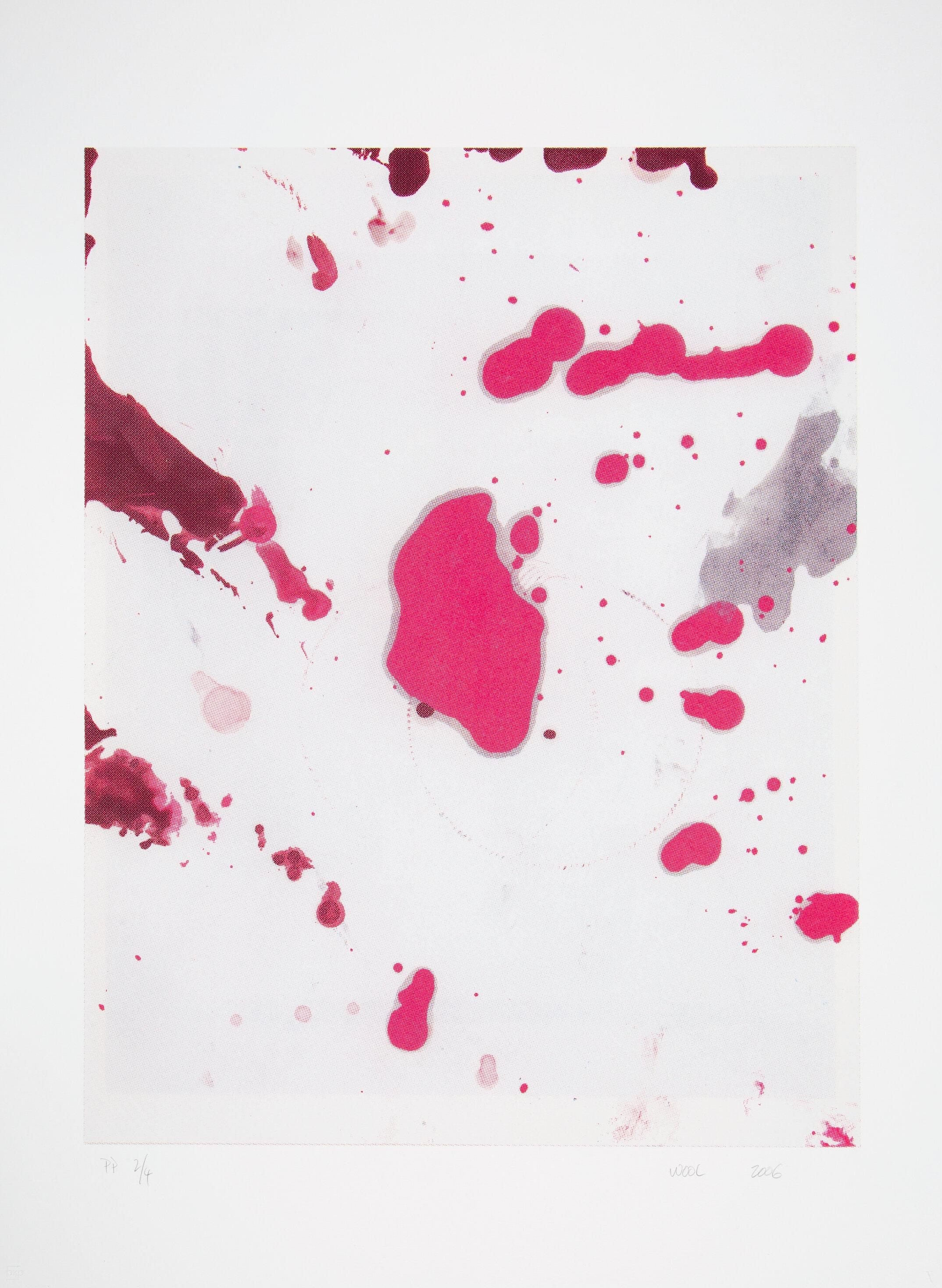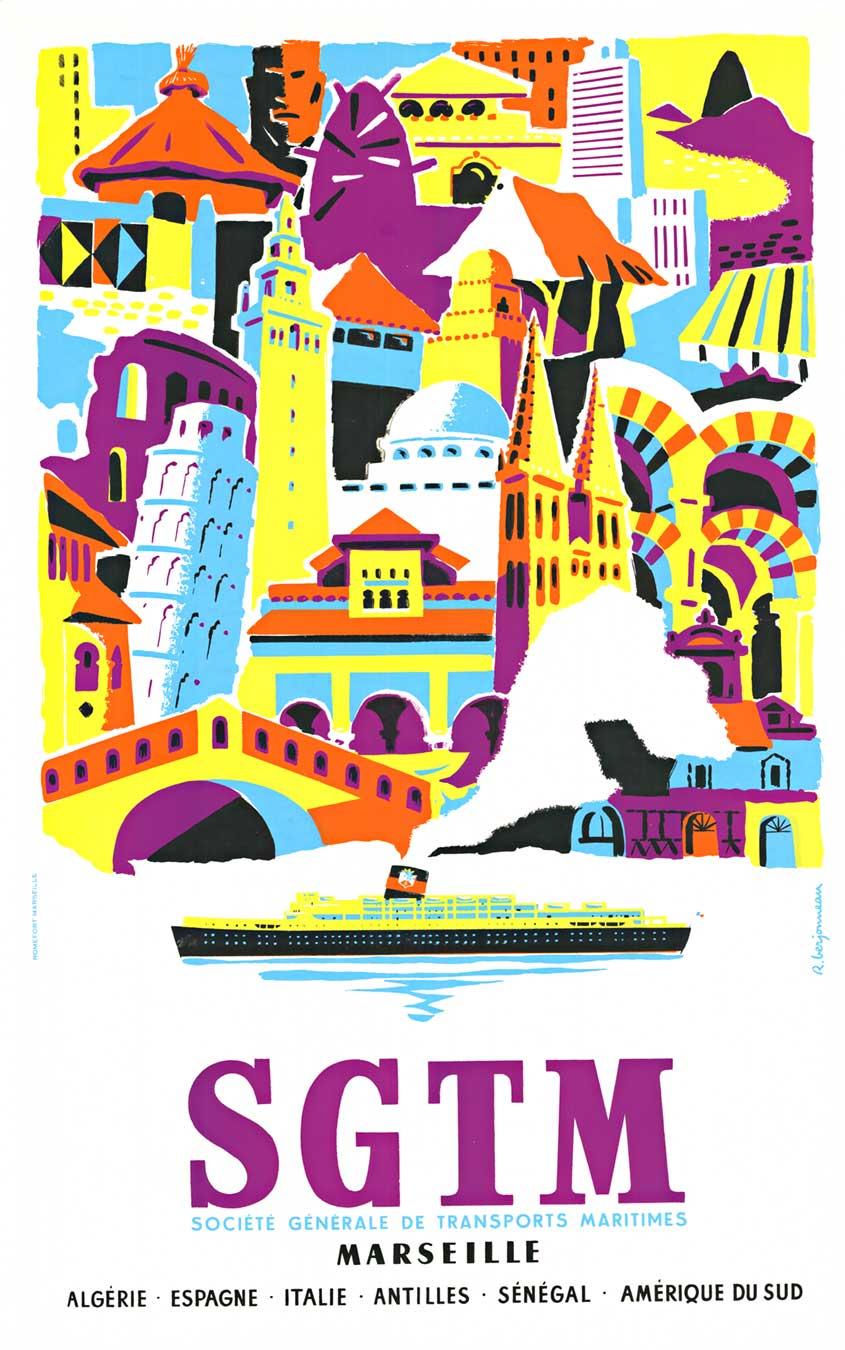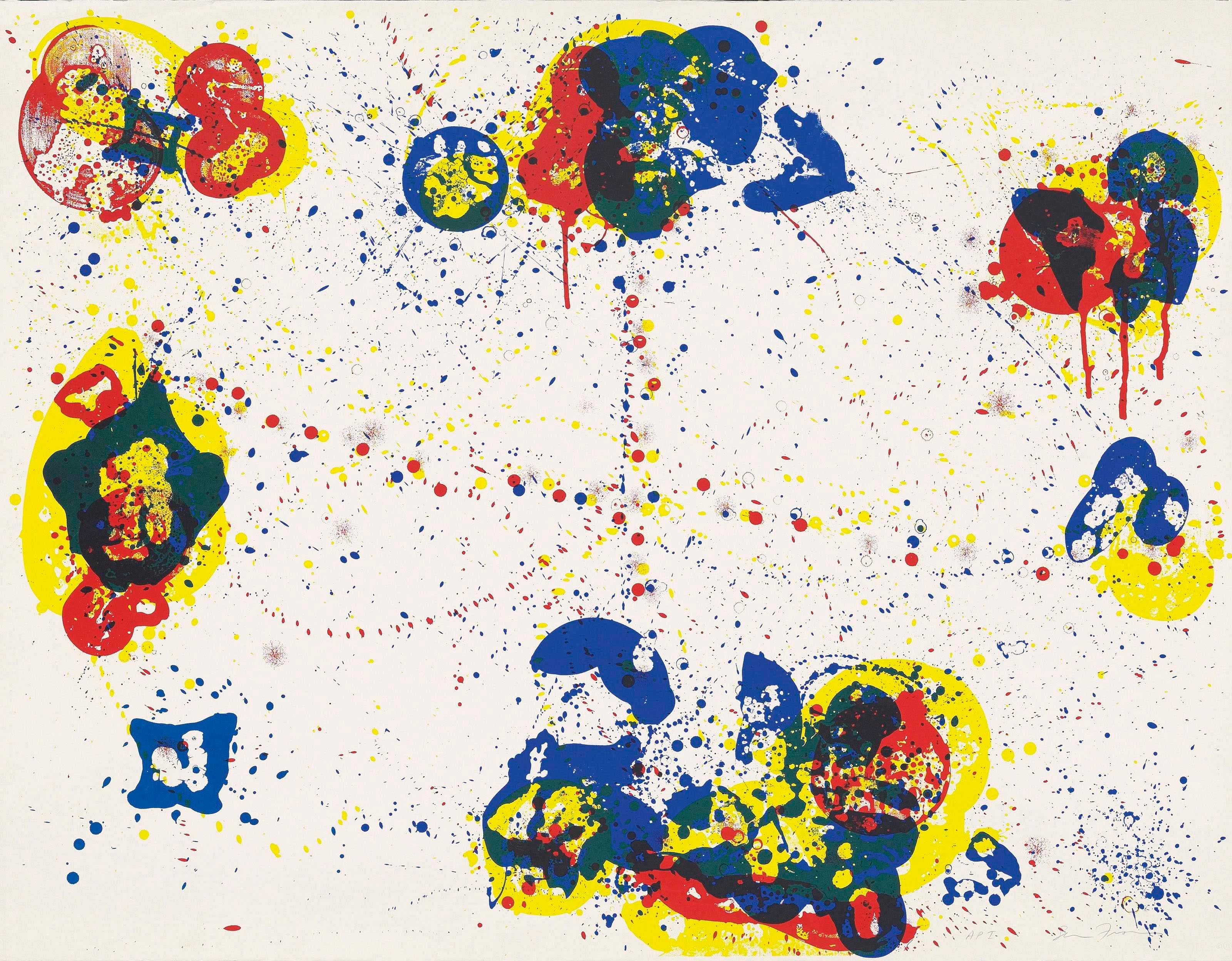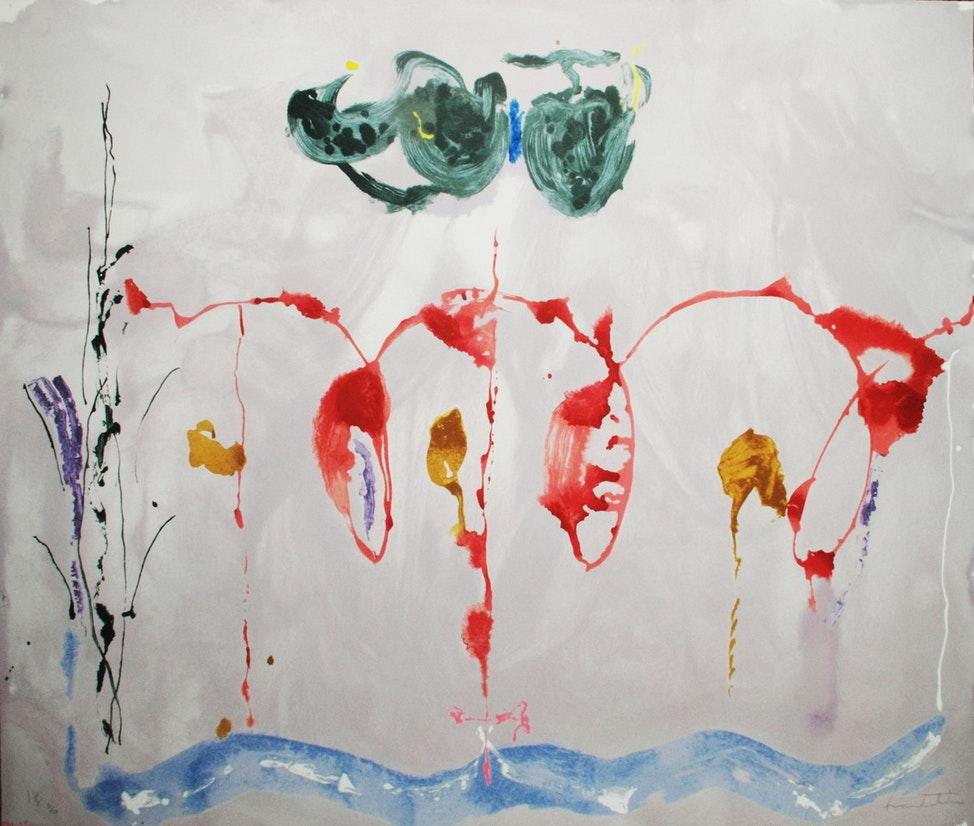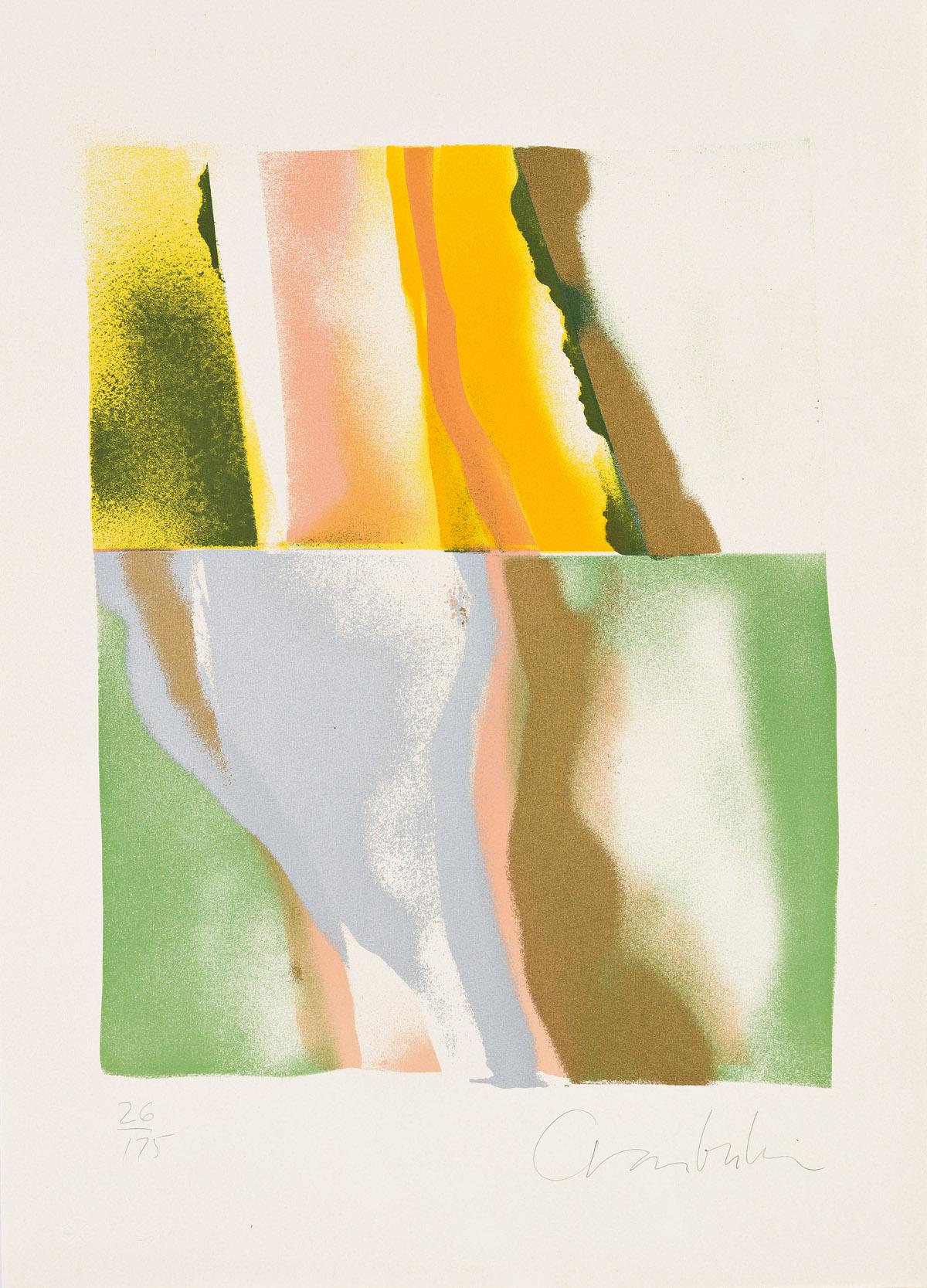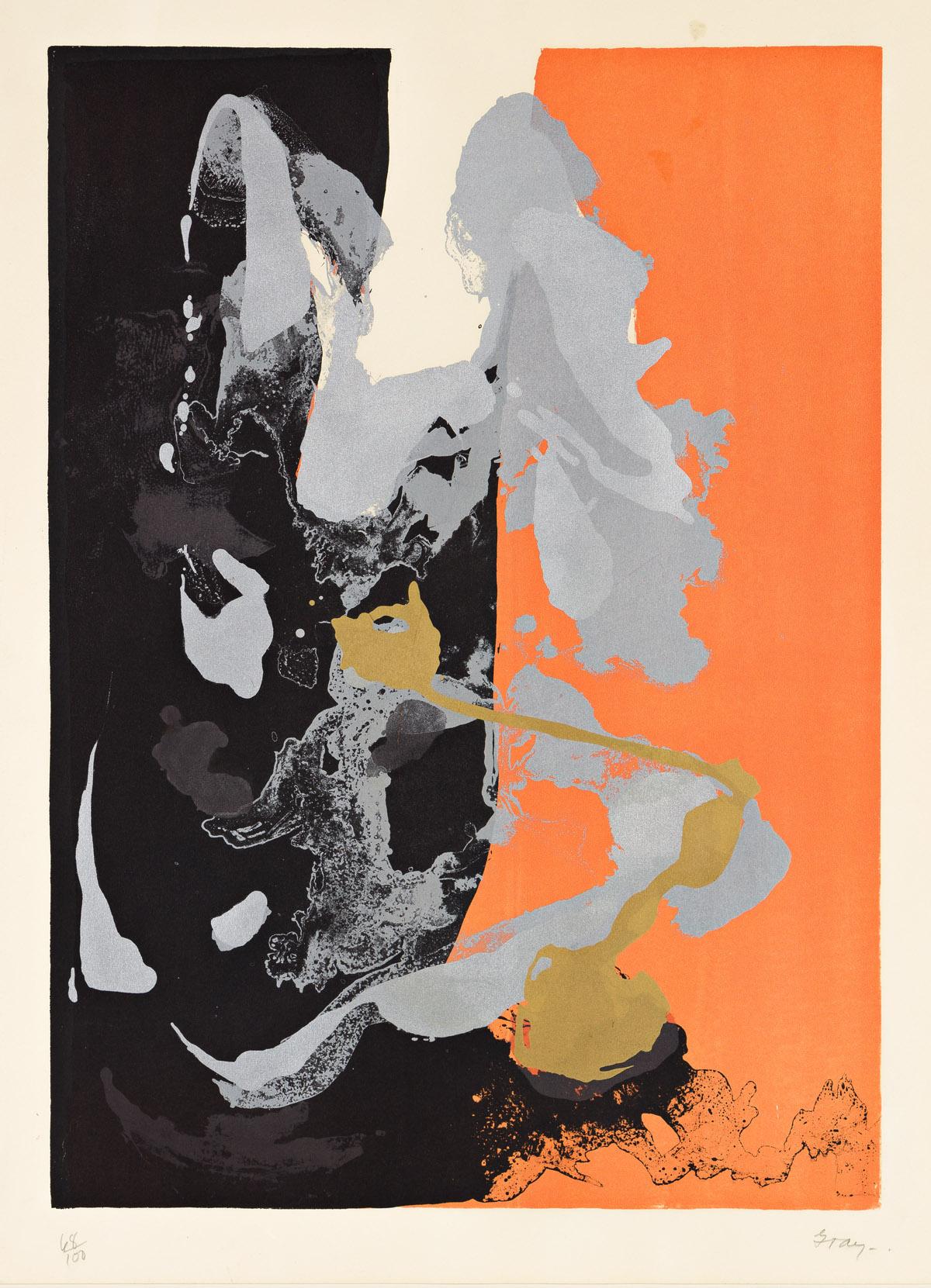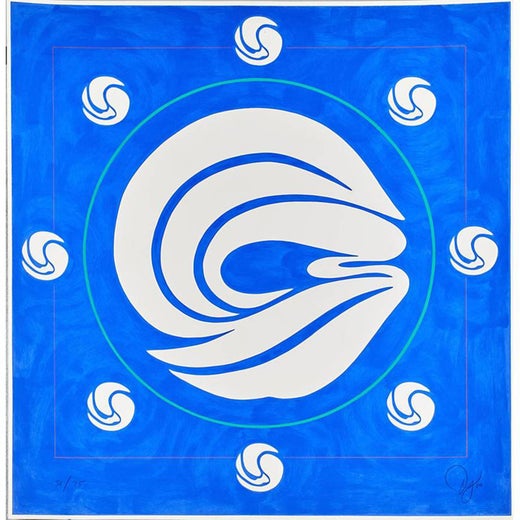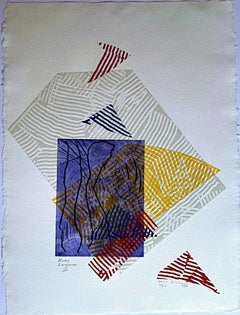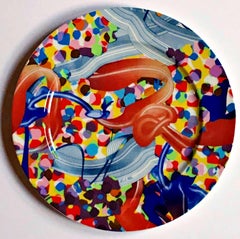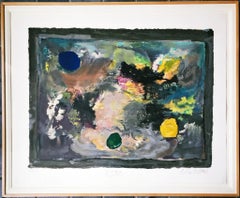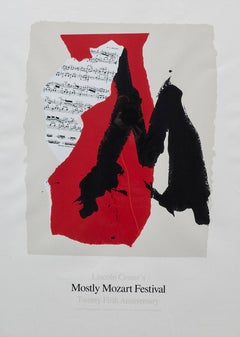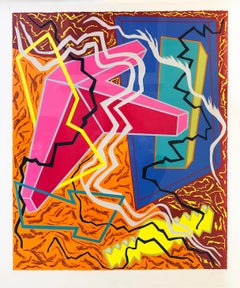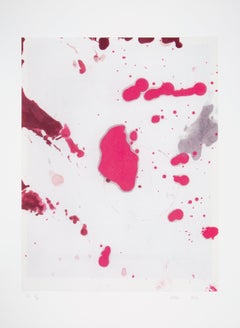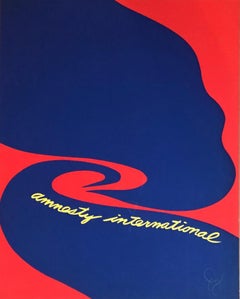
Amnesty International (Hand Signed)
View Similar Items
Want more images or videos?
Request additional images or videos from the seller
1 of 6
Jack YoungermanAmnesty International (Hand Signed)1977
1977
Price:$2,500
$2,800List Price
About the Item
- Creator:Jack Youngerman (1926, American)
- Creation Year:1977
- Dimensions:Height: 31.5 in (80.01 cm)Width: 25.25 in (64.14 cm)
- Medium:
- Movement & Style:
- Period:
- Condition:There are indeed some minor imperfections, some scratches and crackling visible mostly up close; otherwise a bright impression in good to very good condition.
- Gallery Location:New York, NY
- Reference Number:1stDibs: LU1745210807032
Jack Youngerman
Jack Youngerman (1926–2020) is known for his powerful and graphic compositions that alternate between pure abstraction and highly stylized depictions of flowers or other elements from nature. Youngerman often synthesizes the best characteristics of Robert Motherwell and Ellsworth Kelly creating something highly original and confident. Youngerman's work always feels fresh, vibrant and optimistic. The artist has had a prolific career with major museum shows across the United States and internationally, including at the Guggenheim and MoMA.
About the Seller
5.0
Platinum Seller
Premium sellers with a 4.7+ rating and 24-hour response times
Established in 2007
1stDibs seller since 2022
439 sales on 1stDibs
Typical response time: 2 hours
Authenticity Guarantee
In the unlikely event there’s an issue with an item’s authenticity, contact us within 1 year for a full refund. DetailsMoney-Back Guarantee
If your item is not as described, is damaged in transit, or does not arrive, contact us within 7 days for a full refund. Details24-Hour Cancellation
You have a 24-hour grace period in which to reconsider your purchase, with no questions asked.Vetted Professional Sellers
Our world-class sellers must adhere to strict standards for service and quality, maintaining the integrity of our listings.Price-Match Guarantee
If you find that a seller listed the same item for a lower price elsewhere, we’ll match it.Trusted Global Delivery
Our best-in-class carrier network provides specialized shipping options worldwide, including custom delivery.More From This Seller
View AllSam Gilliam, Buoy Landscape IV Mixed media signed/n Abstract Expressionist print
By Sam Gilliam
Located in New York, NY
Sam Gilliam
Buoy Landscape IV, 1982
Color relief print, etching, screenprint, drypoint, aquatint and roulette all from deeply etched copper plates, on handmade wove paper
31 1/2 × 24 inches
Hand signed and numbered 3/25 in graphite pencil
Hand-signed by artist, Signed by artist, numbered, and dated in pencil and blind-stamped by printer-publisher on lower right, titled in pencil on lower left, recto
Unframed with elegant deckled edges
Rare vintage intaglio and relief, all from deeply etched copper plates. Other works from this series are in the permanent collections of major museums & institutions like the Smithsonian, so they are quite scarce on the open market.
Steven M. Andersen (Printer)
Philip Barber (Printer)
Hang Nguyen (Printer)
Stephanie Nowack (Printer)
Michael Reid (Printer)
Daniel Rounds (Printer)
Vermillion Editions Limited (Publisher)
Sam Gilliam Biography:
Sam Gilliam was one of the great innovators in postwar American painting. He emerged from the Washington, D.C. scene in the mid 1960s with works that elaborated upon and disrupted the ethos of Color School painting.
A series of formal breakthroughs would soon result in his canonical Drape paintings, which expanded upon the tenets of Abstract Expressionism in entirely new ways. Suspending stretcherless lengths of painted canvas from the walls or ceilings of exhibition spaces, Gilliam transformed his medium and the contexts in which it was viewed. As an artist in the nation’s capital at the height of the Civil Rights Movement, this was not merely an aesthetic proposition; it was a way of defining art’s role in a society undergoing dramatic change. Gilliam pursued a pioneering course in which experimentation was the only constant. Inspired by the improvisatory ethos of jazz, his lyrical abstractions took on an increasing variety of forms, moods, and materials.
In addition to a traveling retrospective organized by the Corcoran Gallery of Art, Washington, D.C. in 2005, Sam Gilliam was the subject of solo exhibitions at the Museum of Modern Art, New York (1971); The Studio Museum in Harlem, New York (1982); Whitney Museum of American Art, Philip Morris Branch, New York (1993); J.B. Speed Memorial Museum, Louisville, Kentucky (1996); Phillips Collection, Washington, D.C. (2011); and Kunstmuseum Basel, Switzerland (2018), among many other institutions. A semi-permanent installation of Gilliam’s paintings opened at Dia:Beacon in August 2019. His work is included in over fifty public collections, including those of the Musée d’Art Moderne de la Ville de Paris; Tate Modern, London; the Museum of Modern Art, New York; the Metropolitan Museum of Art, New York; and the Art Institute of Chicago.
Sam Gilliam, Green April, 1969, acrylic on canvas, 98 x 271 x 3 7/8 inches (248.9 x 688.3 x 9.8 cm), Collection of Kunstmuseum Basel, Basel, Switzerland, Courtesy of David Kordansky Gallery, Los Angeles, photography by Lee Thompson...
Category
1980s Abstract Expressionist Abstract Prints
Materials
Mixed Media, Drypoint, Etching, Aquatint, Screen
5745, for the Jewish Museum original signed/n abstract expressionist screenprint
By Nancy Graves
Located in New York, NY
Nancy Graves
5745, for the Jewish Museum, 1984
Silkscreen on paper
Signed, numbered 5/90 and dated in graphite pencil on the front; bears publishers' blind stamp front left corner
30 1/4 × 40 1/2 inches
Unframed
Commissioned by the Mr. and Mrs. Albert A. List Graphic Fund for The Jewish Museum, New York
Signed, numbered and dated in graphite pencil on the front; bears publishers' blind stamp front left corner. Commissioned by the Mr. and Mrs. Albert A. List New Year's Graphic Fund for The Jewish Museum, New York. During the 1980s, various artists were commissioned to create a print celebrating the Jewish New Year. This is the silkscreen renowned sculptor Nancy Graves created to celebrate the year 5745 of the Jewish Calendar, beginning in September 1984 (Rosh Hashanah). This work was published in a limited edition of 90. The number 90 has special significance in Jewish gamatria (numerology) for several reasons, including the fact that it equals five times life - or Chai. The number for Chai, meaning "Life " s 18, and 18 x 5 = 90. This is a magical number in Judaism. All of the works were published in editions that were multiples of 18, or the Life. In her lifetime, Nancy Graves did not receive the renown or acknowledgement that her ex-husband and former Yale School of Art classmate Richard Serra did, but she is finally getting the recognition she richly deserves.
Biography: Nancy Graves (1939 – 1995) is an American artist of international renown. A prolific cross-disciplinary artist, Graves developed a sustained body of sculptures, paintings, drawings, watercolors, and prints. She also produced five avant-garde films and created innovative set designs.
Born in Pittsfield Massachusetts, Graves graduated from Vassar College in 1961. She then earned an MFA in painting at Yale University in 1964, where her classmates included Robert Mangold, Rackstraw Downes, Brice Marden, Chuck Close, as well as Richard Serra with whom she was married from 1964 to 1970. Five years after graduating, her career was launched in 1969 when she was the youngest artist — and only the fifth woman — to be selected for a solo presentation at the Whitney Museum of Art. Graves’ work was subsequently featured in hundreds of museum and gallery exhibitions worldwide, including several solo museum exhibitions. She was awarded commissions for large-scale site-specific sculptures and her work is in the permanent collections of major art museums. A frequent lecturer and guest artist, her work was widely documented during her lifetime. In 1991 she married veterinarian Dr. Avery Smith. Graves travelled extensively and was fully engaged with the cultural and intellectual issues of her times. Her brilliant career and life were cut short by her untimely death from cancer at age 54.
From a point of view that she described as “objective,” Graves transformed scientific sources, such as maps and diagrams, into artworks by re-producing their complex visual information in detailed paintings and drawings. Investigating the intersections between art and scientific disciplines, Graves created compelling, formally rigorous, yet ultimately expressive works of art that examine concepts of repetition, variation, verisimilitude, and the presentation and perception of visual information.
Based in SoHo, New York, Graves gained prominence in the late 1960s as a post-Minimalist artist for innovative camel, fossil, totem, and bone sculptures that were hand formed and assembled from unusual materials such as fur, burlap, canvas, plaster, latex, wax, steel, fiberglass and wood. Made in reaction to Pop and Minimalism, these works reference archaeological sites, anthropology, and natural science displays. Suspended from the ceiling or clustered directly on the floor, these early sculptures also engage with Conceptualist ideas of display. For her Whitney Museum presentation Graves exhibited three seemingly realistic sculptures of camels in an installation that evoked taxidermy specimens and questioned issues of verisimilitude in art and science, particularly in light of their hand patched and painted fur surfaces. The exhibition elicited wide spread critical responses and established her artistic significance.
After intensely engaging with sculpture in the early 1970s, Graves returned to painting. Her detailed pointillist canvasses re-produced — in paint — images culled from documentary nature photographs, NASA satellite recordings, and Lunar maps, commingling scientific exactitude with abstraction. Resuming sculpture in the late 1970s, Graves was among the first contemporary artists to experiment with bronze casting. She re-invigorated the traditional lost wax technique by assembling cast found objects into unique improbably balanced sculptures, with bright polychrome surfaces and distinctive patinas.
Throughout the 1980s Graves became widely recognized for her increasingly large and graceful open-form sculpture commissions. At the same time, she also expanded her drawing, painting, and printmaking practice and made large gestural watercolors. Then, in the late 1980s she created wall-mounted works that combined her explorations of sculpture, painting, form and color. In these large-scale pieces, she mounted high relief polychrome sculptural elements to the surfaces and edges of painted shaped canvases so that patterned shadows were cast onto the paintings and surrounding wall.
By the 1990s Graves was casting in glass, resin, paper, aluminum, and bronze, combining these varied materials and colors into daring sculptures with moving parts. As she proceeded in all the media she mastered, Graves increasingly re interpreted and transmuted forms sourced from her own earlier artwork — rather than from outside research — creating elaborate compositions that form a layered a-temporal archaeology of her own visual production.
Nancy Graves’ pioneering art...
Category
1980s Abstract Expressionist Abstract Prints
Materials
Graphite, Screen
Porcelain plate of Princess of Wales Theatre ceiling design (Limited Edition)
By Frank Stella
Located in New York, NY
Frank Stella
Ceiling: Princess of Wales Theatre, 1996
Limited Edition Silkscreened Porcelain Plate in presentation box
12 inches diameter
Edition 262/2000
Rarely found stateside - es...
Category
1990s Abstract Expressionist Abstract Prints
Materials
Porcelain, Mixed Media, Screen
$3,500 Sale Price
30% Off
Elegy, September 11, 2001, screenprint, signed/N, Framed abstract expressionist
By Jules Olitski
Located in New York, NY
Jules Olitski
Elegy, September 11, 2001, 2002
Silkscreen on wove paper
Edition 103/108
Signed, titled and numbered in graphite pencil 103/108 on the front
Framed
Jules Olitski is hon...
Category
1980s Abstract Expressionist Abstract Prints
Materials
Screen
Rare Op Art Mid Century Modern Geometric Abstraction 1969 silkscreen Signed 6/9
By John Grillo
Located in New York, NY
John Grillo
Untitled Op Art Mid Century Modern, 1969
Color silkscreen on art paper with deckled edges
Signed and dated lower right; numbered 6/9 lower left
Limited Edition of only 9...
Category
1960s Abstract Expressionist Abstract Prints
Materials
Screen
Frank Stella, Whitney Museum exhibited graphic work with label, Signed/N, Framed
By Frank Stella
Located in New York, NY
Frank Stella
(Whitney Museum Exhibited) Shards IVA (Axsom 151), 1982
Lithograph & Silkscreen on Arches Cover Paper (Whitney Museum exhibition label verso of frame)
45 1/2 × 39 1/4 in...
Category
1980s Abstract Expressionist Abstract Prints
Materials
Mixed Media, Lithograph, Screen
You May Also Like
Lincoln Center's Mostly Mozart Festival - 25th Anniversary
By Robert Motherwell
Located in Aramits, Nouvelle-Aquitaine
Robert Motherwell, American (1915 - 1991)
Lincoln Center's Mostly Mozart Festival, 25th Anniversary.
Lithograph, Edition of 800, unsigned and unnumber...
Category
1990s Abstract Expressionist Abstract Prints
Materials
Lithograph, Screen
Untitled, 1982 by Joan Thorne (abstract with bright colors)
By Joan Thorne
Located in New York, NY
The limited edition was printed at Fine Creations Inc. and has the printer's blind stamp on the bottom right. It was published by Lincoln Center for the Performing Arts. The availab...
Category
1980s Abstract Expressionist Abstract Prints
Materials
Screen
Giuseppe Capogrossi Iconic Comb Design "Superficie 324" Serigrafia
By Giuseppe Capogrossi
Located in Detroit, MI
"Superficie 324" is a 1988 screen print (serigraph) of a 1959 painting by Capogrossi. This is one of his famous "comb" or "fork" works that he perfected in the 1950s and continued to create for the remainder of his life. The blocks of primary red and yellow colors give a bright, joyful feel and contrast to the strong bold black that was Capogrossi's consistent color for the "combs". With no allegorical, psychological, or symbolic meanings, these structural elements could be assembled and connected in countless variations. Intricate and insistent, Capogrossi's signs determined the construction of the pictorial surface. This piece is identified along one side: Giuseppe Capogrossi By SIAE 1988 Silvio Zamorani Editor Via Saccarelli, 9 10144 Torino Italy Tel. (39)(11) 4730554 Progetto Grafico (Graphic Project): Studio Walter Benjamin. Serigrafia (Screen Print): BISI Torino.
Capogrossi was born in Rome. After obtaining a degree in law in 1923–1924, he decided to study painting with Felice Carena at Accademia di Belle Arti di Roma. In 1927 Capogrossi embarked on a formative trip to Paris together with fellow artists and acquaintances Fausto Pirandello, Corrado Cagli and Emanuele Cavalli...
Category
1950s Abstract Expressionist Abstract Prints
Materials
Screen
Christopher Wool 'Untitled' Abstract Expressionist Signed and Numbered Print
By Christopher Wool
Located in San Rafael, CA
Christopher Wool (b. 1955)
Untitled, 2006
Screenprint in colors on Rives BFK paper
30 x 22 inches (unframed)
P.P. 2/4 (A printer's proof aside from an edition of 40)
Signed, numbered...
Category
Early 2000s Abstract Expressionist Abstract Prints
Materials
Screen
Contemporary Hand cut and pulled screen prints black and white floral abstract
By Kari Achatz
Located in Buffalo, NY
A pair of original hand printed screen prints on paper by American contemporary female artist Kari Achatz.
Category
2010s Abstract Expressionist Abstract Prints
Materials
Paper, Screen
Original SGTM Marseille vintage cruise line vintage travel poster
By Raoul Berjonneau
Located in Spokane, WA
Original French cruise line vintage poster: SGTM, Societe Generale de Transports Maritimes, Marseille. Original vintage travel poster, c. 1955. Archival linen backed original, ex...
Category
1950s Abstract Expressionist Landscape Prints
Materials
Screen
Recently Viewed
View AllMore Ways To Browse
Amnesty International
Georges Braque Galerie Maeght
Miro Lithograph Blue
R Bernard
Kandinsky Lithograph Signed
Garden Bronze Life Size
Vasarely 1980
Alexander Calder Hand Signed
Joan Miro Tapestry
Sonia Delaunay Signed
Vintage Kinetic Art
Georges Braque 1955
Josef Albers Square
Calder 1971
Gravure 1
Indigenous Art Canadian
Robert Rauschenberg Signed Lithographs
Cricket Prints
